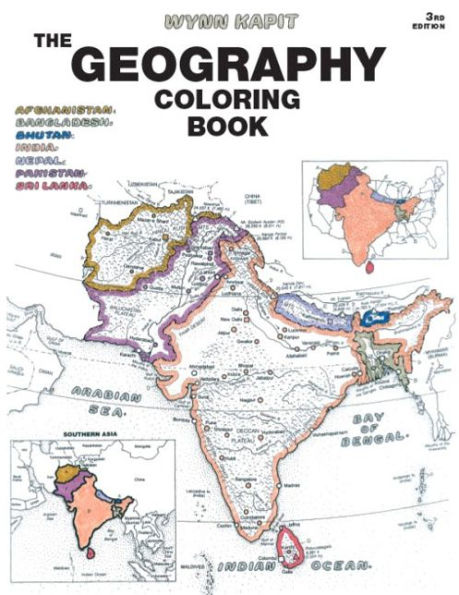Table of Contents
How to Use and Color This Book. A Glossary of Geographical Terminology. THE CONTINENTS.
1. The Hemispheres and Earth Zones.
2. Continental Activity.
NORTH AMERICA.
3. The Countries.
4. The Physical Land.
5. Canada and Greenland.
6. United States.
7. Northeastern United States.
8. Southeastern United States.
9. Southcentral United States, Alaska and Hawaii.
10. Northcentral United States.
11. Western United States,
12. Mexico and Central America.
13. West Indies.
SOUTH AMERICA.
14. The Countries.
15. The Physical Land.
16. Northern Countries and Brazil.
17. Andean Countries, River Plate Countries.
EUROPE.
18. The Countries.
19. The Physical Land.
20. Northern Europe.
21. Western Europe.
22. Central Europe.
23. Southeastern Europe I.
24. Southeastern Europe II.
25. Eastern Europe I.
26. Eastern Europe II.
27. Eastern Europe III and Asia.
ASIA.
28. The Countries.
29. The Physical Land.
30. Asia: Middle East I.
31. Asia: Middle East II.
32. Southern Asia.
33. Eastern Asia.
34. Southeastern Asia.
OCEANIA.
35. Oceania I.
36. Oceania II.
AFRICA.
37. The Countries.
38. The Physical Land.
39. Northern Africa.
40. Western Africa.
41. Central Africa.
42. Eastern Africa.
43. Southern Africa.
POLAR REGIONS.
44. The Arctic, The Antarctic.
HISTORIC LAND EMPIRES.
45. Persian Empire, Alexander the Great.
46. Roman Empire, Byzantine Empire.
47. Islamic Empire, Ottoman Empire.
48. Mongol Empire, Mogul Empire.
FLAGS AND REVIEW OF NATIONS.
49. Introduction, Flags and Review of North America.
50. Flags and Review of the West Indies, Flags and Review of South America.
51. Flags and Review of Europe.
52. Flags and Review of Africa.
53. Flags and Review of Asia.
54. Flags and Review of Oceania.
WORLD THEMATIC MAPS.
55. World Climate Regions.
56. Annual Rainfall.
57. Regional Temperature.
58. Prevailing Winds.
59. Major Ocean Currents.
60. Natural Vegetation Regions.
61. Major Use of Land.
62. Population Distribution.
63. Racial Distribution.
64. Major Official Languages.
65. Major Religions.
COMPARATIVE SIZES OF NATIONS.
66. Largest Nations Compared by Area.
67. Largest Nations Compared by Population.
INDEX.
Geographical Dictionary.
Review and Quiz.



